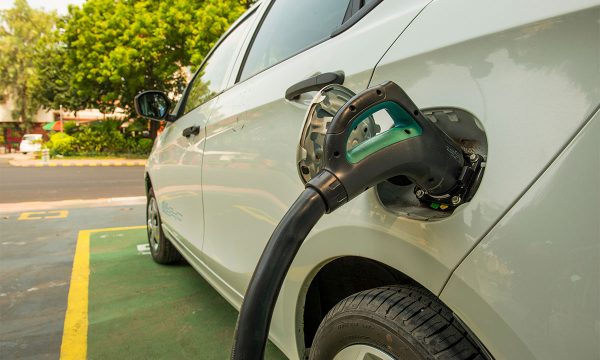
An Ontario-based company is using photos, videos, and text-messaging to add efficiency, trust, value, and speed to your service department to improve the customer experience and help boost sales.
With Canadian auto sales down nearly every month this year, according to data from DesRosiers Automotive Consultants (DAC), it may be more important than ever for car dealers to increase the revenue they generate from the service department.
It’s what companies like AutoServe1 are focused on: helping the dealership increase efficiency in the service department while opening the door to more repair orders — and thus more profits, according to Kole Hicks, VP of Sales and Marketing.
“If we boil it down in a nutshell, we’re a tool that helps people understand what’s wrong with their car, creates a higher level of trust, and in turn generates profit for the dealership in an efficient way because we take advantage of text messaging over voicemails and emails,” said Hicks.
The Toronto, Ont.-based company launched around six to seven years ago and is currently active across North America — including in Quebec, with a bilingual platform.
AutoServe1 offers what is known as DVI, or digital vehicle inspection, in dealership service shops across North America. They consider themselves a communication tool, the “remove the clipboard out of a technician’s hand and document what’s wrong with the vehicle with photos and video” kind of communication tool.
“Throughout the process, the consistent multi-point inspection is faster, it’s more streamlined and it creates more value for the customer.” — Kole Hicks, VP of Sales and Marketing, AutoServe1
The idea is that photos and videos create the trust customers need to understand what is wrong with their vehicle, and between the customer and the dealership, while also serving to communicate the findings to the customer. Text messaging is also used to communicate the issue to the customer, which is a fast and efficient solution to a process many consumers today would argue is traditionally slow and painful.
Asked why dealers should care about products like these, Hicks said paper forms are outdated, they take too long, and they do little to streamline the service experience. He argues that a digital solution can be tailored to fit the dealership and work with the staff.
“Throughout the process, the consistent multi-point inspection is faster, it’s more streamlined and it creates more value for the customer,” said Hicks. Using a DVI or digital vehicle inspection tool “ensures your store’s liability is covered in proper repair documentation; it enhances customer understanding by showing them exactly what’s wrong with their vehicle; it promotes customer trust for the service; and it promotes customer trust that the service was both accurate and important.”
As for what AutoServe1 is planning for the future, Hicks said they have a “whole slew of things” they want to bring to the solution and product. One of those things is a payment solution, which they aim to roll out in the short-term.
Right now the company’s product focuses on discovering what the issue is with the vehicle, using real-time communication with the customer to keep them abreast of the situation, and getting an approval for the work. The payment solution would be an efficient alternative to the traditional process, allowing the customer to pay for the approved fix via mobile phone. “(It will be) the Uber of fixing your car,” said Hicks.
The solution will undergo beta testing and is expected to launch before the end of the year. The company is also working on products that will help improve communication before and after the service appointment, such as follow-ups for deferred or declined work.
“Service departments have a bad rep for trust. People feel they get recommended on a regular basis for things that they don’t need and it’s just a cash cow,” said Hicks. “Recommended maintenance is part of the challenge of that. And when you’re selling recommended maintenance they’re good processes, but they don’t create an experience.”
He said introducing photos, videos and documentation for a customer’s car — a car that they have an emotional attachment to, is a great way to create trust.











